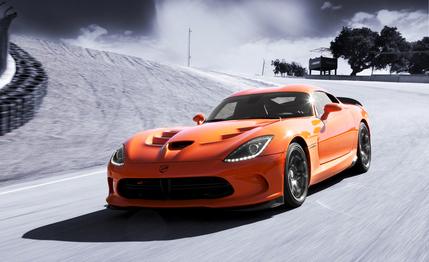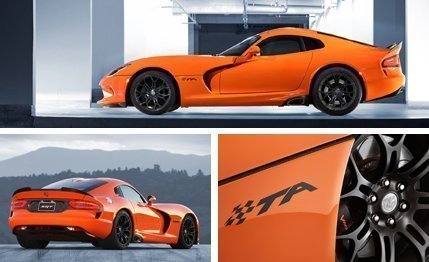
 First Drive Review
First Drive Review
Le Mans Viper driver Tommy Kendall summed up the SRT Viper TA perfectly in two sentences: “The best thing about this car is that it will do exactly what you tell it to do. And the worst thing about this car is that it will do exactly what you tell it.” He’s not kidding. Turn it too quickly, or get too deep into the 8.4-liter V-10 in the middle of a corner—in just about any gear—and the rear end will break loose, putting up a serious fight against the driver’s control of the beast. This track-focused model is obedient, but it demands deference. It’s the automotive equivalent of a circus tiger; one wrong move and you’re going to be in a world of hurt.
A TA—it stands for “Track Attack,” so you can get your mind out of the gutter—starts life as a base Viper and gets a host of alterations made with a single focus: lowering lap times. These include Pirelli P Zero Corsa tires, two small carbon-fiber splitters with a replaceable wear strip, new damper tuning, 20-percent-stiffer springs, a 35-percent-stiffer front anti-roll bar, a 31-percent-stiffer rear anti-roll bar, a high camber alignment, reworked brake rotors and pads, and a carbon-fiber engine-bay brace and rear spoiler. Orange stitching on the cloth interior doesn’t make you any faster; it just feels that way. The engine, the gearbox, and the shifter are the same as those found in base cars.


Get Down with the Downforce
For those who have made such changes to personal cars, that list might sound a little skimpy, considering the TA commands a $16,000 premium over the $104,480 base car, but the changes are certainly quantifiable. For example, those little splitters and the spoiler help produce a claimed 460 pounds of downforce at 150 mph. Compared with the base car’s 75 pounds at 150 mph, the additional downward push is not only significant but also advantageous on a racetrack. The only downside to the extra downforce is its attendant increase in drag, which means the TA tops out at 193 mph, SRT says, 13 mph lower than the base Viper.
The aggressive alignment, which we’re told is the maximum camber the stock suspension would allow, certainly helps midcorner grip, but it also delivers whip-crack turn-in and reduced tire wear over extended lapping. Reaching the grip limit, however, requires a tender touch. We heeded Kendall’s words as we gently explored the car’s limits at California’s intimidating Willow Springs International Raceway. Every lap, we braked later, entered corners faster, and built speed through the big track’s huge, fast sweepers. The key to mastering something as raw as the Viper TA is to build steadily on prior laps rather than try to lop off huge chunks of time.